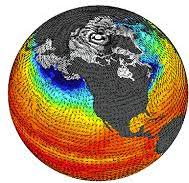Because of the complexity involved, the length of the simulation period, and the amounts of data generated, weather prediction and climate modeling on a global basis requires some of the most powerful computers in the world. The models incorporate topography, winds, temperatures, radiation, gas emission, cloud forming, land and sea ice, vegetation, and more. However, although weather prediction and climate modeling make use of a common numerical methods, the items they compute differ. Climatologists take a longer view. They rely on multiple models that simulate many years of climate change – 10 to 100 or more years at a clip is typical.
Compared to weather forecasting, climatologists take a longer view. They rely on multiple models that simulate many years of climate change – 10 to 100 or more years at a clip is typical.

Download the insideHPC Special report on Weather Forecasting and Climate Research
This article is part of a series on HPC’s impact on weather forecasting and climate research.
Quantifying the impact is not easy. Not only are the computational requirements severe, the climate itself can be capricious – global trends may be obscured by local weather. Climate changes are not uniform – there can be drought in one region; floods in another; severe storms; crop failures; fish and animal migration – all regional effects that can have a profound, long lasting impact on the how future climates play out.
What seems like very small changes in global average temperatures have a significant cumulative effect when the trend is persistent. And the oceans play a key role – over the long term, daily forecasts have little dependence on what happens under the ocean surface, but the long term climate is hugely impacted by it.
Next week we look at how HPC is helping to solve climate and weather forecasting challenges . If you prefer, you can download the complete report from the insideHPC White Paper Library courtesy of SGI and Intel.




